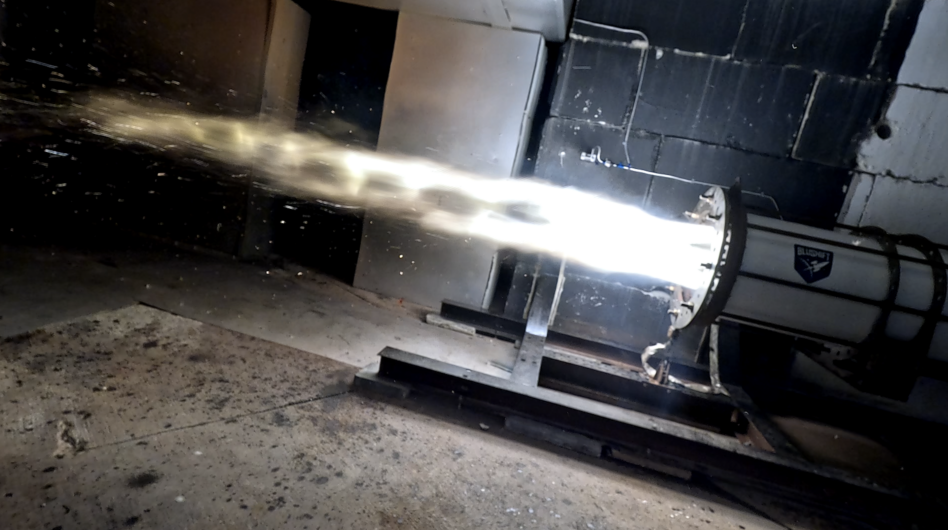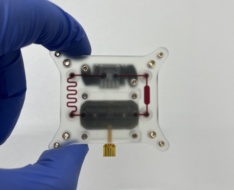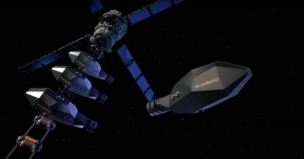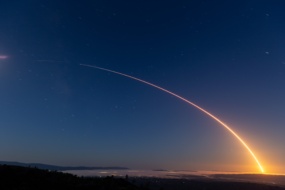Brunswick, ME: Small launch startup bluShift Aerospace completed its most powerful engine test to date last night.
The test, dubbed “Push it to 11,” showed how the company’s Marevl (Modular Adaptable Rocket Engine for Vehicle Launch) engine would perform at higher thrust levels than its first full-duration test in September.
The engine burned for approximately a full minute, but showed some instability near the end of the test, when sparks went flying across the test site. The instability was a sign that the engine used up its hybrid fuel prematurely and began burning through its liner—but even still, it was able to reach thrust levels 10-15% higher than the first test, according to bluShift CEO Sascha Deri.
“We didn’t punch it as far as we could, but what we saw was a much more stable, cleaner burn,” Deri told Payload. “What it fundamentally means is that we’re one step closer to doing our suborbital launch vehicle, and we’re probably a handful of full-duration tests away from finalizing this.”
The way life should be: As launch companies go, bluShift is surprisingly down to Earth.
The company employs about a dozen people, and develops its proprietary non-toxic, bio-derived rocket fuel—which Deri stumbled across in 2013 on his brother’s farm—in-house at its facility in Brunswick, ME.
The company’s test site is located down a dirt road at Brunswick Landing, a WWII Naval Air Station that’s been converted into a modern innovation hub. The bluShift team operates each test out of a slightly dented RV that was donated by the Civil Air Patrol.
All of these small-town quirks allow bluShift to operate and iterate on a shoe-string budget—the test last night came in at approximately $40,000, according to Deri. These low-costs are mainly the result of the non-toxic fuel, which can be handled without extensive safety precautions and tested with spectators just 1,300 feet away.
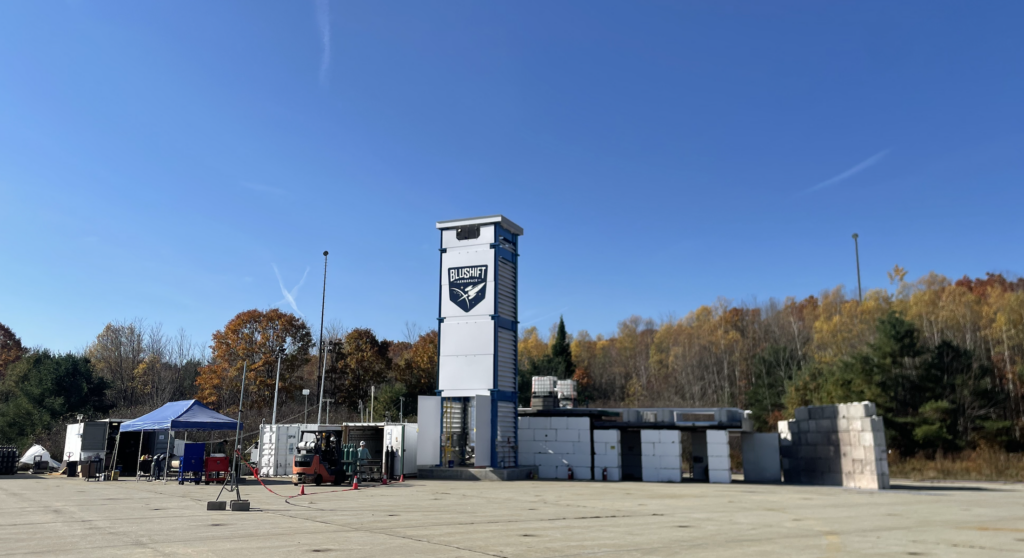
bluShift’s origin: The lack of shiny tech hasn’t diminished the company’s ability to push the boundaries of the small rocket industry.
bluShift became the first rocket company to launch using bio-derived fuel when its Stardust 1.0 prototype rocket launched to 4,000+ feet from Aroostook County, ME in January 2021.
Meanwhile, its funding has remained relatively modest.
- The company got its start with a $300k investment from Deri, and has since received $500,000 in grants and convertible notes from the Maine Technology Institute.
- bluShift launched a WeFunder crowdsourcing campaign that ended in 2023 and raised $1.4M from 1,000+ retail investors.
- In September, the company closed a ~$1.5M seed round that was matched by SBIR TACFI funding.
- The company also received a ~$1.3M SBIR grant from the Space Force to develop its suborbital launch vehicle.
- The company is also working toward raising its next funding round.
Slow and steady: bluShift’s plan is to scale systematically, without making a technological leap so large that it would overexpose the company financially, Deri said.
While many launch companies look at suborbital flights as a hurdle on the path to orbit and profitability, bluShift sees them as business opportunities. The company set out to design a single engine that could provide a range of revenue streams when utilized in different configurations.
- Starless Rogue: bluShift’s suborbital rocket will have a single Marevl engine, and provide customers with six- to eight- minutes of microgravity to conduct research. The company has already gotten its first purchase order from MaxIQ, which will supply research customers on future suborbital launches at an initial annual contract of $300,000.
- Red Dwarf: Combining eight Marevl engines, seven on the first stage and one on the second stage, bluShift will be able to launch to LEO polar orbits.
- Strap-on application: The ~$1.5M SBIR TACFI contract with the Air Force will allow bluShift to study how they could attach Marevl engines to medium-sized launchers to carry 20% more payloads to space, or fly to higher altitudes.
Smooth sailing: bluShift’s rockets will have up to three stackable payload bays 0.6 m in diameter and 0.6 m in height, and aim to offer customers a gentle ride to orbit. The goal is to utilize the proprietary fuel in a way that keeps launch forces at or below 6 Gs, which will further reduce the cost to their customers who won’t have to perform extensive vibration testing on their payloads.
The company expects to launch its first suborbital flight from the Spaceport America launch site in New Mexico by the end of 2025. After that, the company has plans to operate its own launch site on a floating platform in the Gulf of Maine.
